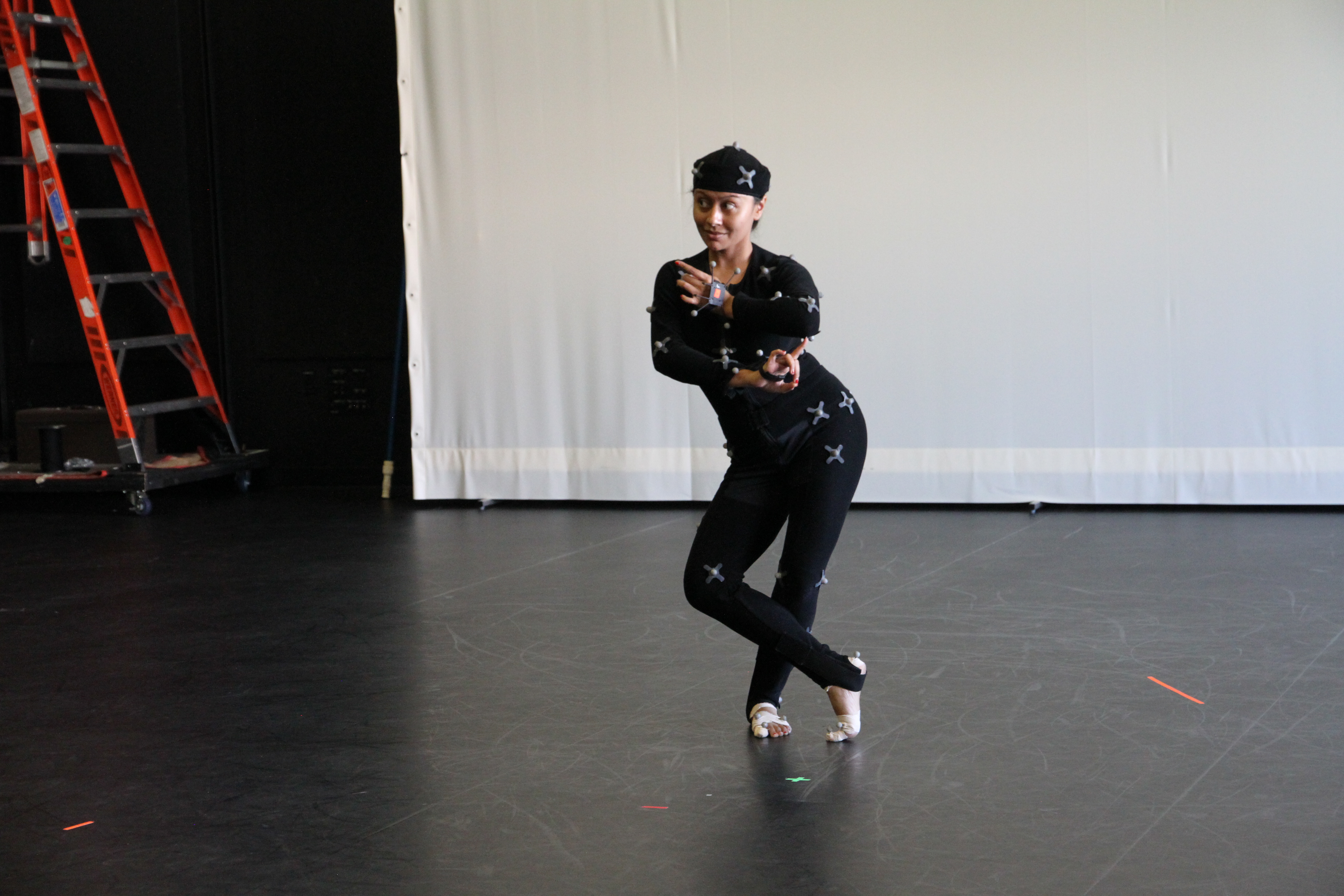Motion Capture in Action | 1 | 2 | 3 | 4 |
Ritual Centering: Data Collection
The process of collecting data in a project involving movement and technology is not only scientifically compelling. Rather, the evocative nature of the ritual movement also erupts from within the methodology of capture, converting embodied motion into data.
A slight bending in the right knee with a soft stamp of the right foot on the ground propels the body in a sling-shot to the right—the torso twisting away from the right hip while the movement eventually hits momentary stasis on the left, the balls of my right foot landing on the floor marking the end of the phrase. I move in an uncomfortable costume with markers attached to different parts of my body during the motion capture session. The marker on my right big toe prevents the complete flexion of my foot. The adhesive tape securing the markers on my feet creates a weird grip and a lack of friction.

The dark room, the lack of spatial coverage demarcated by the Vicon optical camera system, and the strict rules demarcating the orientation of my movement calls for interesting parallels with the Mahari movement in the sanctum sanctorum of the Hindu temples of Odisha. The temple-dancer performed under strict rules and guidelines inside the dark dance hall (Natyamandapa) that was only lit with the oil lamps in the night or percolating sunlight during the day. My concert experience of dancing Odissi in well-lit proscenium theatrical venues contrast the dark non-presentational character of Mahari dancing. While her performance was an embodied offering to the Hindu pantheon, my indirect experience with her ritual aura is for an embodied abstraction. My movement translates into 3D data that animates skeletal figures preprogrammed within the MotionBuilder software. The markers on my body optically reflect light that the cameras capture in order to approximate my movement via a generic skeletal figure. The light and shadow of the dance hall as experienced by the Mahari refract through my practice-as-research (PaR [Nelson, 2013]) methodological process that abstracts embodied motion into 3D data.